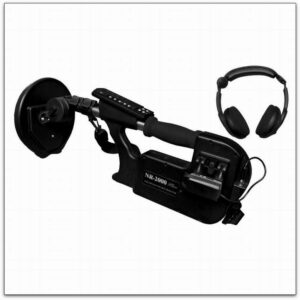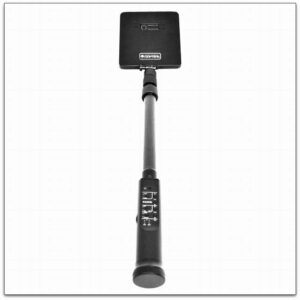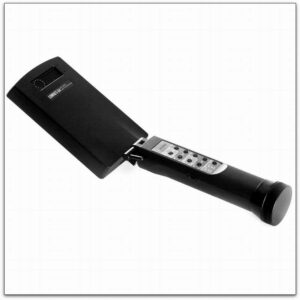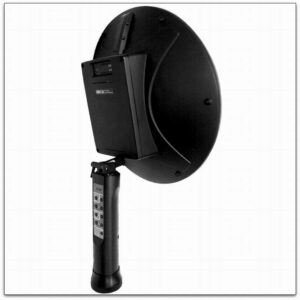Opis
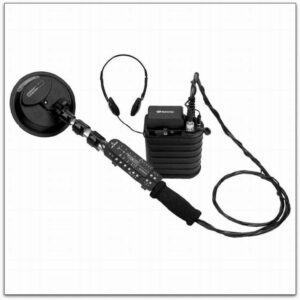
NR 900V is a professional sweep device designed for inspection of constructional elements of building and interior objects in the premises with any security level and complexity. The device is applied for detection and localization of covert electronic devices in different operational modes: in a transmission mode, switched off or in stand-by mode (for remote controlled devices). The operational principle of the nonlinear junction detector (NLJD) isbased on the effect of non-linear signal transduction inside the objects containing semi-conducting components. Devices containing semi-conducting components react to high frequency signals transmitted by NLJD reradiating the energy back on doubled and tripled frequencies of the flooding signal. Electronic components return more 2-nd harmonic of the flooding signal and oxidized metal items and metal-to-metal contacts return more 3-rd harmonic. Reception and analysis of the 2-nd harmonic of the flooding signal allows detection of covert electronic devices. Third harmonic analysis provides effectively identification of electronic devices among oxidized metal items and metal-to-metal contacts. Additional signal processing and interpretation algorithms realized in the device provides simple use and increased efficiency of electronic devices recognition near other objects with similar properties.
Features:
The unique “IDENTIFICATION” mode provides the increased probability of reliable identification of electronic devices among oxidised metal items and metal-to-metal contacts.
The expanded range of flooding signal power adjustments provides possibility for accurately selecting of irradiated energy within localisation of the detected target.
All operational modes are controlled by wireless control panel via radio frequency channel.
The antenna head display shows all service information for the convenient visual scanning of detection results.
Technical characteristics:
Transmitter frequency: 848MHz
Output power:
– in sweep mode: peak pulse 100W [+50 dBm] (average continuous 0,07W [+19dBm])
– signa’ls curve extraction mode (20K): average continuous 0,3W [+25dBm]
Control range of output power: 21dB (step 3dB)
Modulation: amplitude-pulse
– sweep mode: (duty cycle 1330)
– 20K mode: (duty cycle 57)
Receivers frequencies: 1696MHz, 2544MHz
Sensitivity (with digital processing): not less than -150dBW [-120dBm] (at S\N ratio -6dB)
Attenuator levels: -10, -20, -30,- 40, -50dB
Antenna polarization: circular
Elliptcity ratio: not less than 0,75
Gain of transmitting antenna: not less than +6dB
Gain of receiving antenna: not less than +8dB
Main lobe angle: not more than 40°
Back lobe level: not more than -15dB
Audio output: tonal signal (400Hz)
Display: 2×16-dot LED scale (resolution 2,5dB)
Dynamic range of the display: 40dB
Displayed data on the antenna head:
– level of 2-nd, 3d harmonic
– receiver’s attenuator status
– output power level
– operating mode status
Test target detection range in open space (maximum power and sensitivity): not less than 0,4m
Test target location accuracy (minimum power and sensitivity): no worse than 0,1m
Power: 6V [2 battery packs]
Continuous operation time from one battery pack:
– sweep mode: 5h
– 20K mode: not less than 4h
Operating temperature: +5°C +40°C
Dimensions:
– Antenna head: 194mm
– Extendable handle (maximum length): 980mm
– Transceiver unit: 177x140x60mm
– Device in carrying case: 485x390x140mm
Weight (ready for operation / in standard packing): 3,5kg / 6.5kg
Non Linear Junction Detectors:
In 1970s Americans detected wires in the concrete columns of the American Embassy in Moscow. The bugs were installed during the construction of the building, and there was no other way to extract them except for complete destruction of the building. One shouldn’t neglect the importance of correct frequency tuning of NLJD equipment for different types of search environment (for instance, concrete walls). Bugs or wires (as covert listening devices are commonly called) can be set up deep in concrete columns and they still will be transmitting signals. Non-linear junction detectors (NLJD) are devices designed for search and detection of different types of covert listening devices, various electronic appliances and transmitters comprising of semiconductors. The principle of NLJD equipment operation is based on emission of high radio frequency energy in an area. Detectors have a sensitive receiver designated for reception of objects’ echo signals which, for operator’s convenience, are marked down with sound or displayed on graphical user’s interface. Depending on the model, non-linear junction detectors are capable of detecting almost any electronic appliance in any operational mode: active, stand-by, switch-off. The designation of such devices consists in detection of radio microphones, microphone amplifiers, dictophones in premises (walls, floors, ceilings, furniture, etc.). Non-linear junction detectors acquired a reputation as perfect means of counter-espionage, as embassies and other diplomatic posts are known to be most popular targets for eavesdropping equipment. Specific models of NLJD are used by the police in search for weapons during events involving great masses of people. Detectors are used for providing location secure from covert listening devices in different organizations. Non-linear junction detectors can serve multiple purposes and have a wide range of implementation, starting from ground detectors up to equipment used for detection of mobile phones. Wide range of NLJD is presupposed by the type of material or surface for search operations – ground detectors are preferable for object detection in soil, portable detectors tuned to appropriate frequency are better in search within wooden furniture. Non-linear junction detectors have a very peculiar designation, therefore their usage is conditioned by goals set by customers. Taking into account great variety of NLJD equipment there is a specific model for any purpose you may require. Current NLJD products line include models for various applications.
Why Non Linear Junction Detectors?
NLJD technology has proven to be most effective in detection of semiconductors containing multiple layers of silicon, a P-Type and an N-Type. The point where they meet is called a Non Linear Junction.Non Linear Junction also appears in nature: dissimilar metals in contact with one another; the rust on metals resulting from corrosion.


